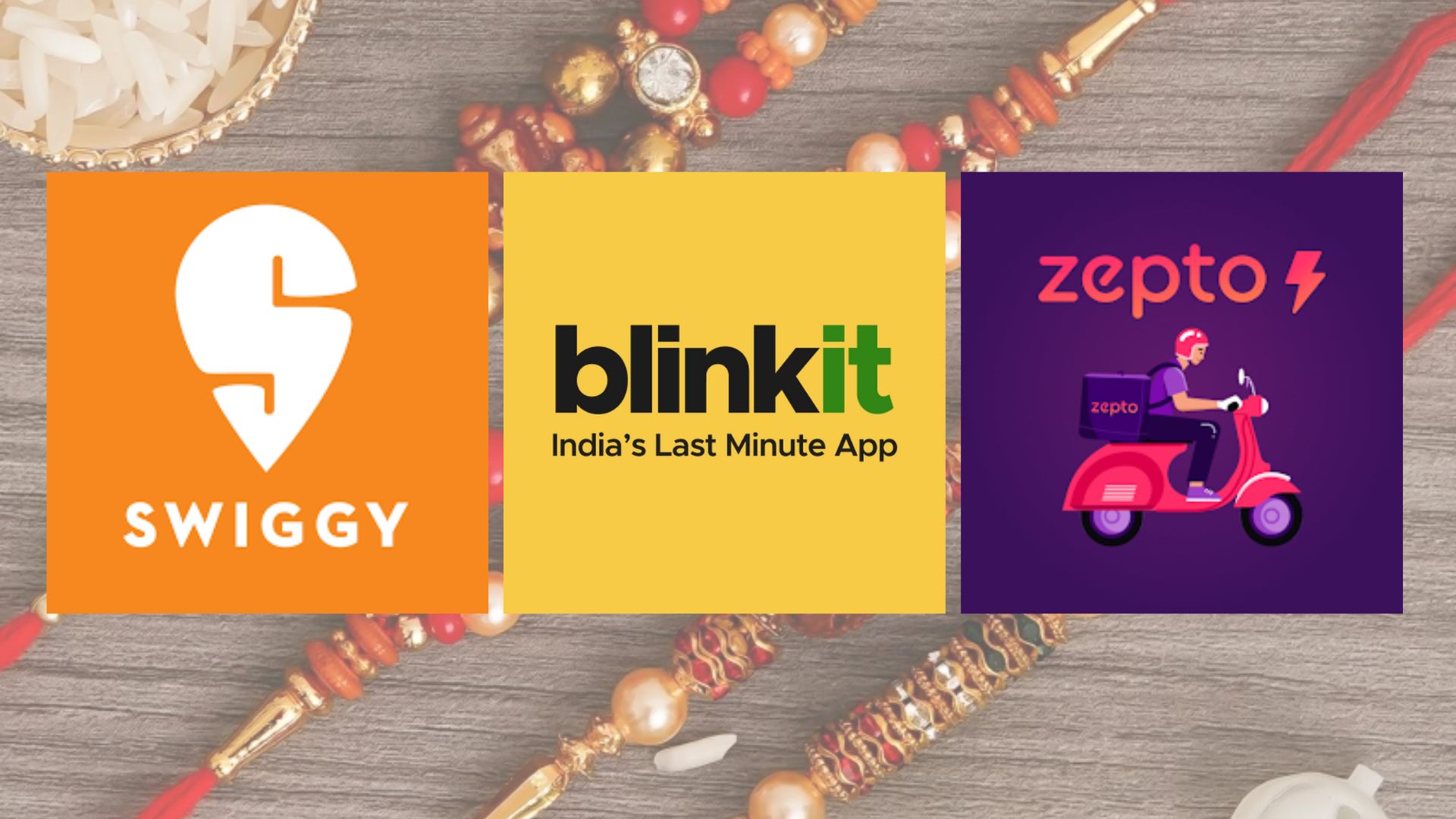
Quick Commerce Surges During Rakhi: Blinkit, Zepto, Swiggy Sales Soar
A night before Raksha Bandhan, Blinkit CEO Albinder Dhindsa went onto to reveal that the quick commerce platform sold a peak of 693 rakhis a minute. Swiggy CEO Phani Kishan also shared that the platform witnessed a fivefold increase in Rakhi sales this Sunday over the same day last year and a single customer from Mumbai transacted a whopping Rs 11,320.
Zepto CEO Aadit Palicha added that the festive surge also experienced all-time highs across orders, sales, and first-time buyers, with a sale of more than six lakh rakhis during the season.
After that, quick commerce has emerged as one of the channels for products needed at any festive moment. Players like Blinkit, Zepto, Swiggy Instamart, and BigBasket have gone ahead and added ethnic kurtas, last-minute gifts, and pooja items to meet the growing demands of the festivities.
According to the Times of India, quick commerce’s sales now include non-grocery items, from 15-20%. The estimate for the online grocery market size is pegged in the region of USD 11 billion or Rs 92 crores, and about half of that amount comes from business on quick commerce.
Blinkit and Swiggy Instamart went international this year too, for rakhis to be delivered abroad by people based in other countries to their relatives in India.
Can festive shopping shift to quick-commerce?
“A lot of categories are indeed picking up in quick commerce. It is at a very nascent stage, but categories such as electronics and beauty products have started to gain momentum,” said Kushal Bhatnagar, an associate partner at consulting firm Redseer. “Whereas in fashion and durable foods, there is a lot of exploration required and high trust, so it will not move into quick commerce.”.
Blinkit’s Anand, founder of D2C fragrance brand Bellavita, says: “Quick commerce platforms are fast becoming the next evolution of e-commerce. Blinkit and Zepto represent the new frontiers of convenience and speed much like what Amazon and Flipkart represented a decade ago.”
For Raksha Bandhan, the curated ready-to-ship packages from Haldiram’s, with most popular sweets, appeared on the quick commerce platforms. Neeraj Agrawal, director, Haldiram Foods International, says, “Looking ahead to Ganesh Chaturthi, the plan is to launch a special modak range on this platform.”
Along the same lines, Cycle Pure Agarbathi has also joined the bandwagon in using quick commerce platforms for pooja offerings in instant gift form in nuclear households. According to Arjun Ranga, managing director of Cycle Pure Agarbatti, “The boxes are a complete solution for rituals during the festive season and they fill each house with the fragrance of prayer.”.
The assortment was put together in such a manner that some of the less-expensive variants would catch the on-the-fly gifting and everyday snacking wave. According to Kush Aggarwal, head of marketing at the brand, the targeted promotional discounts and the festive packaging have been introduced to raise the appeal of the products. “Our festive bundles and limited edition packs are designed to attract customers seeking value and novelty during the celebrations.”
Challenges and opportunities
In India, festive shopping is largely still driven by offline retail, although there have been inroads by e-commerce in some categories over the years. Quick-commerce platforms have grown swiftly, but like all players cutting their teeth, there is every chance that this New Age could end up disrupting the old mould. But even they aren’t sure what challenges they might face.
Festive shopping is usually driven by large categories such as consumer durables, apparel, footwear, and lifestyle accessories, says Praveen Govindu, partner at Deloitte India, a research firm. While quick commerce platforms have started solving specific needs within these categories, their penetration is still at a nascent stage.
He cites the example of bags as one category in which quick commerce comes in handy—most of all for last-minute flyers who discover that their bag is broken right on their day of travel. Again, the convenience of quick commerce comes in handy there, but even so, the range on these platforms remains quite narrow compared to what you’d get at a standalone outlet or a large-format store.
Quick commerce by FMCG and beauty categories, believes Bhatnagar, can happen even quicker than the festive season.
Quick commerce, according to Aggarwal, can supplement the festive shopping experience by ensuring access to a wider selection of products and exclusive online offers that may be missed in the physical store.
Anand also believes that physical shopping cannot be replaced entirely, but it can definitely be supplemented by quick commerce. Quick commerce may not replace everything, but it will garner a substantial portion of the market, which will drive a significant retail pie. “Quick gifting is one of those areas where quick commerce excels,” he adds. Items like perfumes and hampers are ideal for this model.
At the moment, customers are buying low-ticket-value products on quick commerce; consumer trust in this model is still developing like early-stage e-commerce.
Govindu says consumer durables can become significant in the quick commerce segment during the festive season. Quick commerce can be effective for smartphones and tablets with less SKUs (stock-keeping units) unlike appliances like washing machines which have many SKUs. “Strategic alliances between brands and quick commerce platforms can drive effective campaigns and enhance visibility,” he mentions.
Categories poised for surge in demand on q-comm during festive season
Further, quick commerce could prove difficult in the consumer durables category in the sense that it lacks opportunities of return compared to e-commerce.
A critical commerce challenge is also dark stores, which are not built for offering a rich range of products. Designed as fulfilment centres rather than customer-facing retail units, dark stores mean the usual number of SKUs available for distribution is constrained. Therefore, quick commerce is faster and more convenient, but the result might be less choice than with conventional retail or e-commerce offerings.
Avi Kumar, FNP’s chief marketing officer, a platform for gifting at Ferns N Petals, says that with the insights into purchase histories and browsing patterns, real-time personalization of product selection and promotions of the right offers could be done for consumer needs during the festive season.
While this data can be useful at a macro level, he points out, it also includes valuable information about which ZIP codes or demographics are purchasing certain brands very frequently. Sure, this data isn’t super granular, but that, according to Anand, provides more than enough information for brands to really understand which cohorts to go after.
Alongside comes the launch of ‘Flipkart Minutes’, while now Ola ventures into the quick commerce space as companies jostle by the day. Flipkart, with a very large consumer database and fulfillment centres gained from its already strong e-commerce operations, will leverage support from parent Walmart. As for Ola, it is investing in technology, fully automating its warehousing.




Leave a Reply